The Best Quick Easy Interior Paint With Primer
We list here the good paint and primer in one and when you can use them. Be very careful and consider the results you will get if you use a paint and primer in one step. I have seen a lot of ads pushing this idea of one-coat painting, but that just plays to people's idea that painting is a drag and one coat would be quick and easy. It is not messy and it is not hard to clean up.
In most cases, it's a sure thing to go with the old method of a first coat of primer because if you get the wrong type of primer (there are many) in your paint and primer in one, you will be starting all over when you think you are done.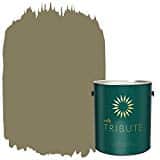
For one-step paint/primers, when your walls are without stains I highly recommend Kilz Tribute which comes in more than enough colors to choose from. The color family here is gray/green, but there are many Tribute color palates that you will see when you click on this one.
For other one step paints with primer jump to the bottom to see the list of the best products and what they are for.
Summary on paint primers:
- For new (unstained) drywall: You don't need stain blocking power, so use this good but inexpensive drywall primer: 5 gallons (free shipping: wow) is the best value… but it also comes by the gallon if you need less than five.
- For re-painting walls, trim, etc: You need bonding between the old and new. The go-to primer is this a water-based medium-power primer (especially when changing from dark to light colors).
- For unpainted wood: Use an oil-based medium-power oil-based primer for most woods. For pine, go with Prime Lock, from Benjamin Moore (shown).
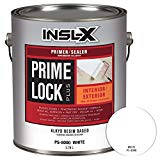
- For nasty stains, ink, and worse: One coat of this strong primer: this high powered stain-blocking shellac. You'll need rubbing alcohol to clean up.
We have a complete list lower in this post.
WARNING: Some paint and primers have high VOCs. Read our post on VOCs.
We also have a detailed post on how many coats of primer for every situation.
Why use a primer?
Generally, primers are for sealing and giving porous surfaces a first 'drink' so they are paint-able ( and so the next coat will adhere). Paints don't do this: they are for looks and, outdoors they are for looks and protection.
Below I explain why it's better to do the primer alone in the first step instead of using a paint and primer in one (plus you will always have some leftover and it comes in handy). But sometimes paint and primer in one step can be a big help.
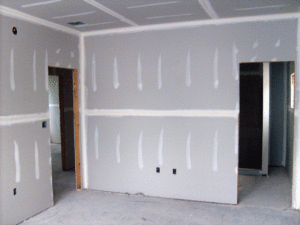
When to use a paint and primer in one?
When your walls are without stains and when you have no new wood. Wood almost always has some kind of resin that will bleed through most primers. Even if your wood is not going to bleed through, the hard/soft grains will accept the first treatment differently and swell at different rates causing a nice smooth sanded wood to become rough. A good oil-based primer prevents this.
If you are painting walls and want to try a paint with a primer in it, be sure that your walls are:
- without stains (such as water stains, mold stains etc)
- have no unprimed wood
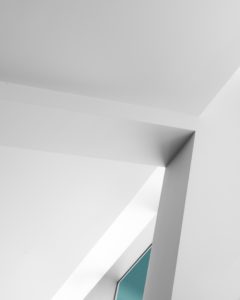
The best paint and primer in one
Buy a quality paint and primer in one: use Kilz, a very good name in primer, and for sure one of the best paint and primer. Kilz has many very nice colors to choose from. It is also a quality primer with low VOCs.
What is inside your Paint and Primer in One?
There are several types of primers. Some paint primers are designed to seal out stains, and some to create a bonding surface. What kind of primer did your paint and primer in one come with? You need to know what it is designed for.
Is it for rust? Metal? Plastic? Cigarette smell? Bold colors need primer-love too.
A very good reason to not use a paint with primer: Your health. Why using toxic ingredients if you do not need them? Paint with primer in it has much more VOCs compare to quality paint and many primers. The one I recommend above is one of the best.
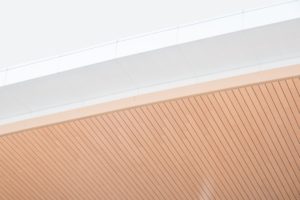
Primer for wood: do not use a paint with primer in one
My friend asked me why his wood ceiling would not cover wood after 4 coats of paint. Should have called me first dude.
Resins in wood and water stains in walls that pick up impurities need a shellac-based primer to stop the stains from bleeding through (that is an alcohol-based goo). It's called BIN and there is a link at the top.
Going to prime your new walls? That's a horse of a different color: shellac or other sealer is not necessary. A stain-killing primer will be more than you need. Why buy more firepower than you need? Why breathe that stuff if you don't have to?
Surfaces with different absorption rates
Drywall and the "mud" compound that covers seams and spots where the screws are will soak up paint differently. As a result, if you don't use a primer to stop the absorption (paint won't do it), you will always see the seams and spots. The drywall primer at shown at the top is the same one we use.
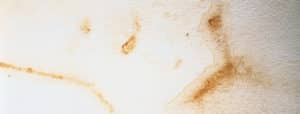
Get the right paint products
You have to know what you are doing before you go shopping. Ask me in the comments, or ask a real paint store (not a big box store: they hire monkeys).
If you get the wrong type of primer, you may not seal tannins, stains, resins, or oils that you should have sealed and it will have to be done again. These impurities bleed through every layer of latex paint: latex does not have any real sealing properties. Good to buy a small-sized can and test one area before buying all the paint.
Use one coat of primer

Honestly, in most cases, with the right tools and the right clean-up method, one more coat is not that big of a deal for an average room.
You can always write a comment below: I'll be hanging around there.
The whole ball game is: what are the solids in the solution of your paint, in your primer, and in your paint and primer in one? Solids? It is the solids that wind up doing the job for you.
When NOT to Use Primer (and When You Must):
Stains: like from water or tree sap. At least spot prime where they appear.
Drywall: yes, always, but only with drywall primer which is not nearly as intense as stain killers. Be sure to dust those new walls first or you will have a gritty wall! (We use a push-broom or this duster you connect to a broomstick). We have a longer article about drywall primer and the key steps involved. Read about drywall primer and the key steps involved in the work.
New wood: if pine, you will need an oil primer (Prime Lock linked at the very top of this page). Other woods: you may get by with water-based, but the Prime Lock is a sure thing, and I use it on all new wood.
List of Primers
Here is a list of the different kinds of primers: go here to choose your weapons when you know what you need. The second one is my main go-to choice: the original alcohol-based primer. So, have some rubbing alcohol on hand to clean your hands. Use a low-cost brush and throw it away because most of these primers (even the water-based ones as they get gunky after a bit). Don't expect these brushes will work for cutting lines. Read my post on that.
- KILZ Original Multi-Surface Stain Blocking Interior Oil-Based Primer/Sealer (Low VOC Formula): blocks most stains including water, smoke, tannin, ink, pencil, felt marker and grease.
- The original BIN: alcohol-based and works everywhere. More than you need probably.
- Main drywall primer: Rust-Oleum Corporation 01501 Drywall Primer: Won't raise the nap on new drywall…sands easily.
- Kilz General Purpose: Not recommended for flooring, glossy surfaces, mold- and mildew-prone surfaces, or for stain blocking.
- KILZ Adhesion High-Bonding Interior Latex: Bonds to tough-to-paint surfaces including Kynar, PVC, Formica, vinyl, glass, tile, glazed brick, chalky paints, glossy finishes, fiberglass, and metals.
- KILZ Premium High-Hide Stain Blocking: Excellent adhesion for most surfaces, use on interior and exterior drywall, plaster, woodwork, paneling, masonry, and brick. Ideal for high-humidity areas including bathrooms and laundry rooms…to seal light to medium stain
- KILZ MAX Maximum Stain and Odor Blocking: For tough stains from water damage, rust, smoke, nicotine, grease, tannin, ink, pencil, felt marker, pet stains and more while also sealing pet and smoke odors…water-based.
- KILZ Klear Multi-Surface Stain Blocking Interior/Exterior. Water-based. Formulated to bond and seal porous and chalky interior and exterior surfaces with a tough, flexible, and breathable clear coating. for sealing drywall, plaster, wood, galvanized, aluminum, architectural plastics, masonry, and brick. Soap and water cleanup and dries fast – ready to recoat in 1 hour.
This is the short, common list. The internet authority, Wikipedia is on the ball about primer. Sherwin-Williams has a great article on types of problems.
Good luck!
Here is our way of using the least primer firepower first: if any color or stain bleeds through, we hit the spots with the heavy-duty primer:
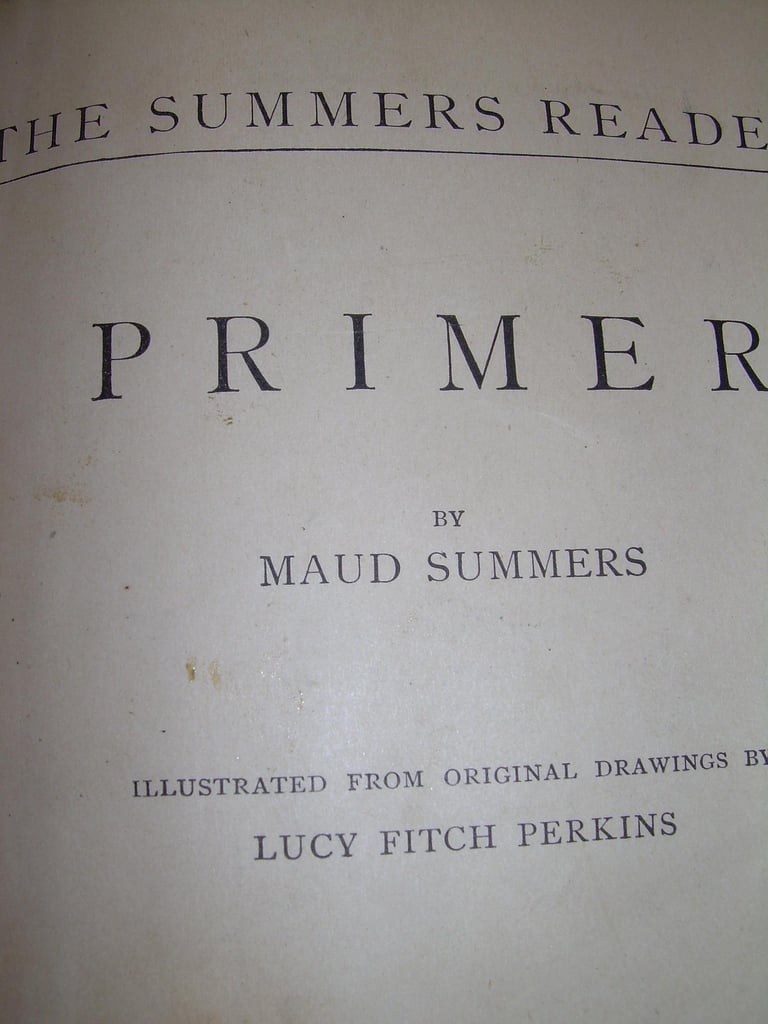
Source: https://www.bradthepainter.com/paint-and-primer-in-one-paint/
0 Response to "The Best Quick Easy Interior Paint With Primer"
Post a Comment